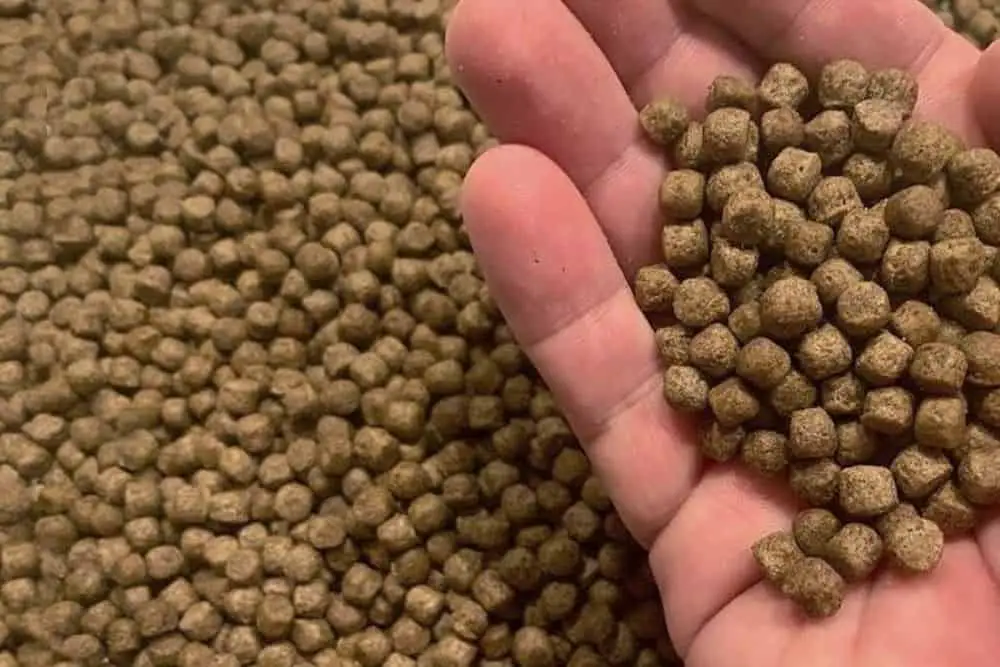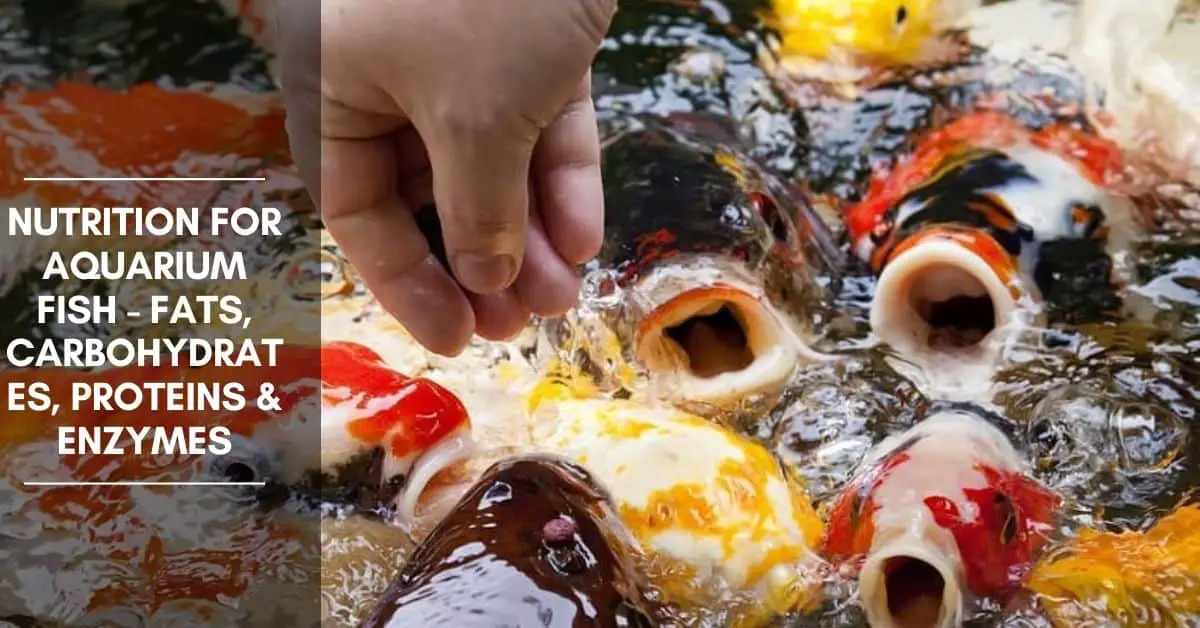Metabolism is the sum of the processes whereby body tissues are built up and broken down. The chemical changes that occur provide energy for life functions and enable the organism to transform nourishment into new body tissue. Limitations of space prevent us from discussing these processes in great detail. However, the following general discussion of metabolism and nutrition m fishes should suffice for our purposes.
Fishes, like all other living creatures, require the proper foods in order to carry out metabolic functions. Carbohydrates, proteins, and fats, as well as minerals and vitamins, must be present and in the correct proportion in the diet it metabolism is to proceed properly.
Unfortunately, little as yet is known about aquarium fish nutrition; this is because investigation thus far has been limited largely to fishes raised for human consumption. Yet proper nutrition is essential if our fishes are to develop to their full potential.
Fats
The energy potential of a food is measured in calories and, weight for weight, fats are twice as rich in calories as are carbohydrates and proteins. Fats are broken down in the intestines into monoglycerides, triglycerides, and fatty acids.
Their final destination is the liver, where they are stored until needed for energy. The tissue of the natural prey of wild fishes contains only one to two percent fat. A fish in captivity should not be fed a diet containing more than five percent fat, or it will suffer such ill effects as fatty liver degeneration, decreased egg production, reduced chances of successful hatching, and accumulations of fat around the internal organs. Also, the aquarist should be aware that fats in prepared foods can turn rancid and cause serious metabolic disorders.

Carbohydrates
Fishes obtain carbohydrates – sugars and starches – by eating vegetable foods, as well as animal prey that has fed on vegetable foods. (The animal body cannot manufacture carbohydrates.) After carbohydrates are ingested, the body converts them to fats and to glycogen, a starch-like substance stored in the liver and muscles.
Glycogen is converted to sugar by the body and then used as fuel for physical activities. Although carbohydrates are an essential part of nutrition, a diet too rich in carbohydrates proves harmful. The fishes that are not vegetable eaters should not be fed more than about six grams of carbohydrates per kilogram of body weight a day.
Research conducted in American fisheries has indicated that trout can not cope with a diet containing more than nine to twelve percent carbohydrates. Sardines fed mainly on carbohydrates were shown to suffer from fat accumulation around the organs; those fed on proteins grew better and did not gain excess weight.
Proteins
Protein is composed of amino acids, necessary to build, maintain, and replace body tissue. Certain amino acids can be synthesized by the body. Those that can not – approximately ten of them – must be ingested in the diet.
Protein containing all ten of these “essential” amino acids is called “complete” protein. Certain body functions may be seriously impaired if one or more of these amino acids is missing. Incomplete proteins – those not containing all the essential amino acids, can be combined in the diet in order to supply all the essentials.\
API STRESS ZYME Freshwater and Saltwater Aquarium Cleaning Solution 16-Ounce Bottle
API ACCU-CLEAR Freshwater Aquarium Water Clarifier 4-Ounce Bottle
30% OffAPI GENERAL CURE Freshwater and Saltwater Fish Powder Medication 10-Count Box
15% OffExperiments have demonstrated that trout require about 28 percent pure protein to ensure the health and normal growth. Furthermore, annual proteins are more nutritious than vegetable proteins. Intact, prolonged feeding on vegetable proteins has led to metabolic disorders, sometimes accompanied by blindness and anemia.
Enzymes
Without enzymes (also called biocatalysts) the body can not digest food. Enzymes, which the body itself produces, break down the raw materials of ingested food into components that can pass through the intestinal wall into the blood. To better understand their function, let us look at the digestive tract of the fish.
Unlike most other vertebrates, the fish has no enzyme-producing glands in its mouth. With mouth and esophagus, it processes the food mechanically, cutting it up and mixing it by chewing. The digestive process starts in the stomach, where hydrochloric acid and pepsinogen are produced.
The hydrochloric acid maintains a pH in most fishes’ stomachs between 4.0 and 7.0, breaking down all calcium-containing substances in the food (such as bones and other skeletal parts of animal prey) and inhibiting bacteria growth that might otherwise take place in the stomach.
Measurements have shown that the surface layer of a fish swallowed by a predator is much more acidic (pH 1.2-3.0) than the predator’s stomach itself. A few millimeters inside the prey, however, the pH is 3.4-5.0. Because the hydrochloric acid infiltrates the prey quite gradually, the rate of digestion is correspondingly slow; this partially explains why a predator (a pike, for instance) takes large prey only once every three to five days.
Hydrochloric acid is also needed to activate pepsinogen, which changes into the enzyme pepsin. Pepsin partly breaks down proteins into peptones and enhances the action of the enzyme trypsin (which also acts on proteins). It enters the intestines via the pancreatic duct as trypsinogen, where it is changed and activated by enterokinase, an enzyme secreted in the intestine.
The enzyme amylase reduces carbohydrates to simple sugars, such as glucose. These pass through the intestinal wall and into the blood. Surplus sugar is stored in the liver as glycogen. The liver itself continuously produces bile salts and stores them in the gall bladder.
These salts act on the fats as an emulsifier, breaking them down into smaller particles in much the same manner as soap breaks down oil or grease. (In experiments on fishes in which the bile ducts were severed, more than fifty percent of the fats left the body undigested.) These globules are digested by the enzyme lipase, which breaks them down into simple fatty acids, such as glycerol.
It appears that in some fishes the cells of the stomach wall itself absorb and further break down a certain proportion of partially digested proteins and fats. This is called intracellular digestion. The acid environment of the stomach is separated from the alkaline environment of the intestine by the pylorus or pyloric valve.
When this sphincter relaxes, a portion of chyme (semi-digested food mixed with hydrochloric acid) enters the intestine. The pylorus closes while the acid reacts with prosecretin, the inactive form of a hormone produced in the intestinal wall. (Hormones are substances which relay chemical “messages” via the bloodstream.) The reaction changes prosecretin to secretin, the active form, which is then absorbed into the blood, reaching the pancreatic organ in a few seconds and stimulating the secretion of its enzymes into the digestive tract. These enzymes contain sodium bicarbonate, which neutralizes the hydrochloric acid in the intestine – whereupon the pylorus opens again and the process is repeated.
The pancreatic organ lies near the pylorus and produces enzymes in a manner comparable to the pancreas of mammals. In fishes, however, the gland is “diffuse”; a part of it may penetrate into the liver and gall bladder. For this reason, it need not necessarily be regarded as a separate organ.
Curiously, several species return part of the food that has already passed the pylorus back into the stomach. This might be regarded as a kind of rumination and is reminiscent of another curious aspect of the digestion of herbivorous fishes.
In the intestines of herbivorous mammals, such as cows and deer, there are extensive bacterial fauna that play an important part in the digestion of certain parts of vegetable food (cellulose, lignin) that cannot be broken down by the animals’ own enzymes. When antibiotics are administered to herbivores, their digestion is often badly upset because the antibiotic destroys some or all of the intestinal bacteria.
Remarkably, neither herbivorous nor carnivorous fishes possess such characteristic bacteria. Some bacteria may be found in the intestine, it is true, but the assortment of species depends entirely on the food intake and the water.
They are all species that have nothing to do with digestion but are simply taken up from the environment. Examination of a fish that has gone without food for several weeks will show that its intestinal tract contains practically no bacteria. Therefore, fishes apparently digest a very large proportion of their vegetable food without help from other organisms.
Certain enzymes found in many invertebrates (mainly marine animals that live on a vegetable matter such as algae) specifically aid the digestion of this kind of food. These invertebrates have no symbiotic bacteria cither; the enzymes themselves enable them to digest the food.
It would seem that herbivorous fishes manufacture at least three enzymes – lichenase, salicinase, and amygdalase which apparently facilitate this task. Herbivorous fishes are the only vertebrates possessing these enzymes, none of which have ever been found in mammals.
It is also interesting to note that the passage of food through the intestine of a fish is probably the slowest in the whole animal kingdom. As in other poikilothermic animals, the rate of digestion is influenced by the temperature of the environment.
A rise of 18°F (10°C) speeds up digestion two to four times; a drop of 18°F (10°C) reduces the rate two to four times. The aquarist will, therefore, want to keep his fishes at a low temperature is scarce, when he is on vacation, for instance.

Hi, my name is Sean, and I’m the primary writer on the site. I’m blogging mostly about freshwater and saltwater aquariums, fish, invertebrates, and plants. I’m experienced in the fishkeeping hobby for many years. Over the years I have kept many tanks, and have recently begun getting more serious in wanting to become a professional aquarist. All my knowledge comes from experience and reading forums and a lot of informative sites. In pursuit of becoming a professional, I also want to inspire as many people as I can to pick up this hobby and keep the public interest growing.
Read more about Sean.
Please join also my Facebook group.















